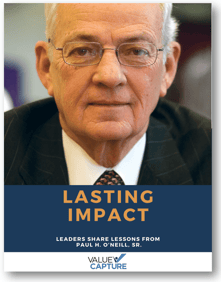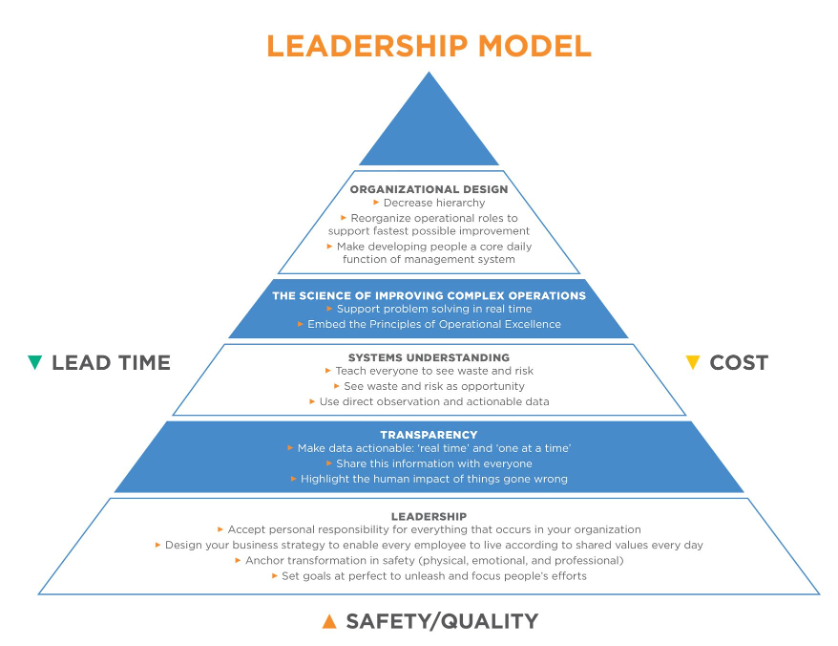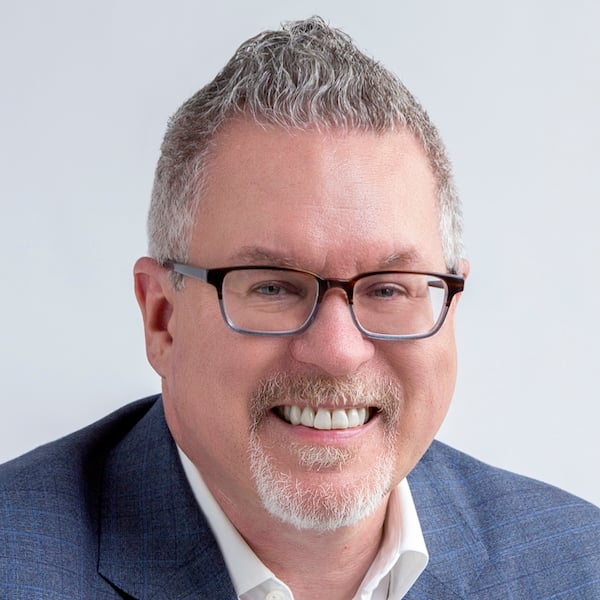Value Capture is pleased to share another excerpt from the free eBook, Lasting Impact: Leaders Share Lessons from Paul H. O'Neill, Sr.

The leadership lessons that he taught are timeless. And our latest book, written by George Taninecz, is a collection of stories and reflections from leaders who learned from Mr. Paul H. O'Neill, Sr. The book shows how these leadership practices and mindsets live on and will continue to be taught and passed on to others.
We hope that you'll download the book. Feel free to share it with others. See all book excerpts.
Excerpt:
Organizational Equality
Flat organizations have been around for decades, with an objective of eliminating managerial levels for greater employee involvement and faster decision-making. But for O’Neill, flattening wasn’t just an organizational construct, it was about equality, a belief that every individual in an organization — especially those on the frontline — contributes to the organization and deserves to be heard, respected, and supported equally.
Maureen Bisognano is President Emerita and Senior Fellow of IHI. In 1997 when she was the Chief Operating Officer there, she and CEO Don Berwick wanted to “harvest” the best business ideas outside of healthcare, and they identified a group of CEOs — including Jack Welch from General Electric, Desi DeSimone of 3M, and O’Neill — that they would visit. She remembers being blown away by the office arrangement at Alcoa, especially O’Neill’s workspace.
“It was a small office, a little pod. I remember asking Paul about his feelings about the work environment. One of the first things he said was, ‘I don’t believe in hierarchy.’ His desk was right across from and the exact same size as his executive assistant’s.”
O’Neill’s office was unlike what was common in healthcare leadership, and his engagement with staff far different than many of the CEOs whom Bisognano and Berwick met that year. One executive, she says, took them on a tour of his company and had a person follow along with a drink cart in case he wanted to stop and have a cocktail. “It was so hierarchical. You could feel hierarchy as soon as you walked in, you could feel entitlement and superiority. With Paul, it was just the opposite. That was probably the most important moment for me, because it said so much. That moment, looking at that cubicle, and then him just passing something over to his executive assistant who is sitting right across from him in the exact same desk. And then, when he took us on a tour, watching the way people said, ‘Hi Paul,’ and how many people he knew. It was a reflection of the culture that he built. It spoke so much to his personality.”
She remembers how it was fun to hear a well-respected leader talk about a philosophy that resonated with her.
“He talked about flattening the organization, removing layers, and really empowering the people closest to the frontline to make the decisions that they knew best how to make.”
She was impressed with how O’Neill “flipped the organization chart,” removing the pyramid with one person at the top; at IHI, Bisognano eventually eliminated the organization chart. “It was really a lesson that I took from Paul, who was saying, ‘That’s a drawing that only enhances people’s perception of power and takes away a sense of accountability to those people who feel like they’re at the bottom.’ I loved having no organization chart.”
Value Capture’s [CEO Ken] Segel learned from O’Neill and those around him that the really important things in any organization are happening with the people who are doing the real work — between each other, between them and customers, between them and the people the business serves, and between them and the people who serve the business. “It is their work that creates the social value, and everybody else in the organization exists to support it,” he says. Compared to what society often expects of leaders (e.g., big offices, great thoughts, fancy meetings), “he stood for the opposite, quite literally. Not just rhetorically, but the literal, physical way that he led. He aligned and drove others to lead at every level of the organization... I would say one of his key lessons was that transformational change really does require that.”
Even in flattened organizations, someone ultimately must make tough decisions. O’Neill was never afraid to make difficult decisions, but he did so by gathering and deeply valuing the input of others and showing everyone respect, says [Kevin] McKnight. “I have worked in organizations and encountered leaders that are very different. Many of the leaders that I have seen in significant roles think they are the smartest ones in the room all of the time, and they really don’t value the contributions of others. Many times when you sit with them it is more about them imparting their knowledge and experience to you.”
Following in the path of O’Neill, McKnight tries to lead with the perspective of a “directed democracy, [in which] everyone has a vote, everyone contributes, everyone’s perspectives and ideas are valued. And in the end, the leader has to make a decision, but it is guided and influenced by the experience and expertise of the entire organization. I really believe this style and approach has enabled high performance in the organizations where I have been and, more importantly, the individuals all feel valued for their contributions and respected for what they bring. That is the key to creating an environment where people feel good about what they are doing and how they are contributing, and that is kind of Paul’s philosophy in a nutshell.”
O’Neill proved over and over again to colleagues in many industries that a leader’s job was one of doing — being involved in the important changes that need to be made, engaging others to contribute, and working directly with everyone to increase value and achieve excellence — rather than communicating a need and expecting others to execute.
[James] Anderson remembers the strong, consistent, quiet compulsion that O’Neill had to advance the values he believed in, his desire to make things happen in pursuit of those values, and his support of those with similar beliefs. “It’s an action-oriented, value-driven philosophy that does not accept inaction, doesn’t accept compromise on values...What’s important is that a leader continue to advance the values and help the people, be a partner with the people that are working with you to advance those values.”
He adds that never was there a thought — for O’Neill or himself — that the CEO’s role was to stake out the values and say, “Go do this,” to others.
“Paul very much set high goals but also shared those goals and the obligation to deliver on those goals with the people in the organization who needed to do the day-to-day work together.”
Cincinnati Children’s Dr. [Steven] Muething agrees, and learned from O’Neill that “as a leader you need to understand systems, you need to understand data, you need to use that data — and then you need to use the position that you’ve earned of a leader and use it to change that. You don’t have the luxury of saying, ‘Somebody ought to do something about this.’ It’s you. That’s what I got from Paul. When you take on a leadership role, you can’t look around and say, ‘Somebody should fix this.’ It’s you. You’ve got the data, it’s staring you in the face, so you’ve got to figure it out and learn. And you’re not going to get it right the first time. You’ve just got to keep going.”
Spear says most leaders today have not embraced many of O’Neill’s leadership perspectives, such as organization wide contributions, because they’ve unfortunately been taught that the leader’s “job is to process data and arrive at decisions that are largely transactional. And Paul had a view that his job as leader was to create the environment in which people could be developed as contributors to the wisdom of the collective. When he’d talk to leaders who are oriented toward this transactional decision-making, he’d say, ‘Look, you have to invest more time, effort, social capital toward building this problem-solving dynamic.’ They’d say, ‘Oh, no, that’s not what I do. I’m going to delegate that to some lackey.’”
Sometimes O’Neill’s adherence to his beliefs and values was exhibited in small but extremely compelling ways. McKnight recalls early on at Alcoa when O’Neill was dramatically changing the company’s safety culture, a group of executives, including O’Neill, were walking to lunch on Sixth Avenue in downtown Pittsburgh. They were standing on a corner talking, and the crosswalk light was red; they looked both ways, didn’t see cars, and walked across the street. “When they get to the other corner, they look around, and Paul is not there. They look back across the street, and there stood Paul on the other side of the corner, standing there patiently waiting for the light to change. I mean, wow, what a powerful teaching moment.”
From the moment O’Neill began engaging the healthcare community in Pittsburgh, Segel says, “We knew he was a very high-profile figure, but we did not realize the depth of his leadership framework, his accomplishments using it, and just how suitable and powerful it would be, it could be, for healthcare.” That framework had deep roots in values, aspirations, and systems thinking and systems-based action, he adds, which was exactly what those attempting to improve healthcare had been searching for in trying to make sustainable change (see Leadership Model).

O’Neill’s ability to wield the leadership framework was forever there, adds Segel.
“Even up to the very last encounters with Paul, even when his framework was very well known to me... he could pierce through what you were dealing with in a way that really attached to the fundamental purpose, in a way that was deeply aligning and clarifying. This was even when he was quite ill. That sense of power, insight, and humanity never went away.”
Dr. [Gary] Kaplan of Virginia Mason says that O’Neill helped him to understand and embrace the fact that as a leader he was sending signals to people and that a leader’s actions are always being watched. “How we behave, how we respond, these are all things that are signals that we’re generating. I remember when I first realized this, I hated the fact that people were watching me and that I could no longer carry a cup of coffee down the hallway in the hospital without sending the signal that it was OK to eat and drink in the workplace. I think that has really helped me as the leader of an organization or a business, and, particularly, a special kind of business called healthcare.”
Data-Based Decision-Making
O’Neill wanted data as close to real-time as possible. While Treasury Secretary, O’Neill discovered that, despite incremental progress over the years, it took six months to close the Financial Report of the United States. In a statement to the U.S. House of Representatives, he wrote that the pace “will not move us forward quickly enough to close what I see as the gap between the current state of financial management and a condition that would adequately meet our responsibilities to the American people.” He proposed establishing private-sector-like objectives for governmental financial management, which would force people to think creatively. “We should start with the amount of time it takes to close our books. When I was in the private sector, we closed the books and had an audit opinion in three working days. We need the Government to establish a similar goal.”[1]
While CEO of Cincinnati Children’s, Anderson had talked to O’Neill about his Treasury experience and his penchant for real-time data, and so he pursued a similar path, which was uncommon in healthcare at the time. “The only information that was worthwhile was real-time data,” Anderson says. “We had, at the hospital, lots of reports that came out months later and sometimes years later. I was insisting and pushing hard to change our system so that the data we relied on and had vantage to was real time to the extent we could do that.”
In 2010, when Dr. Muething was the Safety Officer for Cincinnati Children’s, O’Neill visited the hospital. “The time I had with him was all about him asking probing questions, wanting to know what work I do. He wanted to know every piece of data. He wanted to look at data. He wanted to know what we were doing about it. I could tell now, in retrospect, he was testing whether I was somebody who just talked the talk or walked the talk. And something happened through that visit where I must have passed the Paul O’Neill test because from that time on, he was always willing to answer emails, talk on the phone. From there on after that, it was always about the work, what are we doing moving forward.”
Value Capture’s [Geoff] Webster found it remarkable that O’Neill’s fundamental caring for people was also coupled with his data-based and, in some ways, dispassionate methods. “He wouldn’t get stuck in arguments about things that people didn’t agree about. It doesn’t mean he didn’t disagree or that he didn’t even try to draw out where people disagreed. But he always tried to bring it back to the facts, the things that could be known and known for certain and the universal principle, things as simple as dignity and respect and thinking — where you could always reach agreements because nobody was going to argue with you.” Webster says he would frequently get stuck in arguments, and from then on mirrored the O’Neill method of getting people aligned around and aiming for the same goal using ideas and information with which they can’t argue.
“One of the things that I remember very specifically about Paul is how critical it was to have all of the right data,” says McKnight. “You know, Paul always wanted to dig into the data. He was very data-driven, and so I remember several occasions where we would have meetings with Paul, and he wanted to see the data, and if we didn’t have the data that he needed to see in order to be able to evaluate the situation and be able to help make a decision, Paul would say, simply, ‘You know, sounds like we don’t have all of the data we need. Let’s go get the data, and then we will reschedule the meeting.’ And then the meeting was over.”
While at Alcoa, O’Rourke quickly learned to prepare for meetings with O’Neill: “
I remember when he first came to the corporation, he would call individuals to his office. That’s always scary to get called to the boss’ office, but Paul was fact-based, first of all. So you better have your facts together before you went in that office. And then he would challenge it. He always challenged everybody to do their best.”
[1] Paul O’Neill, “Statement of Paul H. O’Neill Secretary Department of the Treasury to the House Government Reform Subcommittee on Government Efficiency, Financial Management and Intergovernmental Relations, U. S. House Of Representatives, Financial Report of the United States Government, Fiscal Year 2000,” March 30, 2001.
Get the Full eBook (Free PDF):

Written by Mark Graban
Mark Graban has served healthcare clients since 2005. Mark is internationally recognized as a leading author and speaker on Lean healthcare. His latest book is "The Mistakes That Make Us: Cultivating a Culture of Learning and Innovation."


Submit a comment